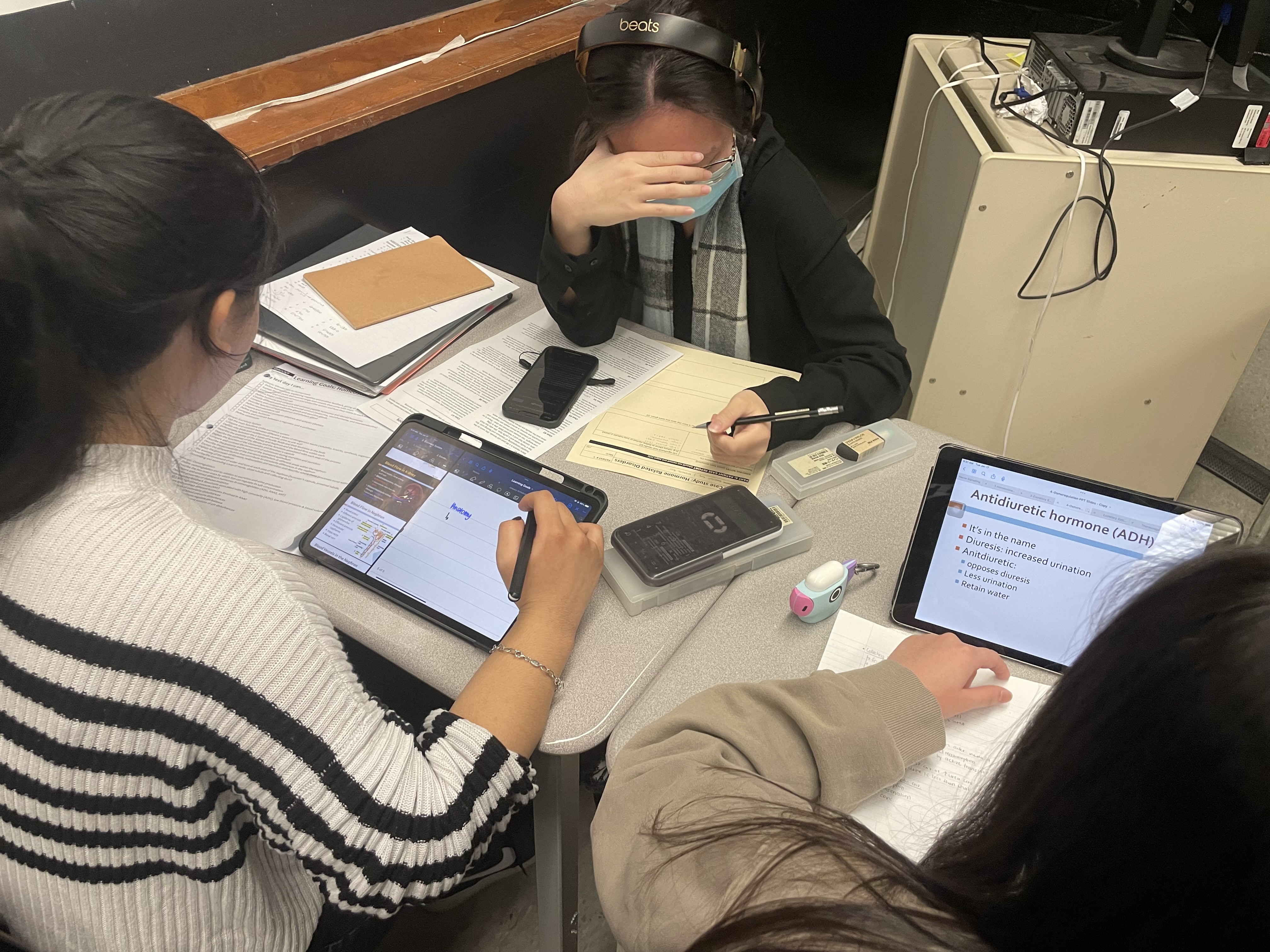
math
languages & writing
resources
Study, Set... Go!!
Well, it’s time.
This year has brought back so many missed events and experiences for students. Semi-formals, longer lunches, maskless meetups and, of course, the one we’ve all collectively been dreading, exams. For Grade 11s and 12s especially, exams are a touchy subject right now, and understandably so. The skills that we were meant to build across our high school years have been lost to online classes and grade inflation. Now, as we come face-to-face with these 2-hour terrors, many of us feel lost on where to start — myself included. From the annoyingly aesthetic notes online to the vague terms often thrown around, it’s tough to get going with nothing to start with. To that end, I went on a deep dive into learning more about study methods the internet often swears to understand their practicality and the research backing them to give us all a bit of an edge with our exam prep.
Active Recall vs Spaced Repetition
Spaced repetition and active recall are the two terms I notice get thrown around the most when it comes to study tips. The problem with them is that they are very broad ideas that can be applied in a multitude of ways to the point that it can be hard to actually use them. By the end of this, you’ll hopefully understand more about these techniques and how to apply them!
Studies have shown that our brains tend to store information better the more we encounter it and that we can remember it for longer periods of time if we revisit the information often. This is highlighted through Hermann Ebbinghaus' famous “forgetting curve.” According to the book “How We Learn" by Benedict Carey, the reason for this is that our brain will generally forget information that is deemed unnecessary. The harder that we have to work to retain that information, the more likely it is to be integrated into our long-term memory. To study using spaced repetition, space your topics out with bigger and bigger gaps and study them consistently. The Leitner system, detailed later in this post, is one example of this.
Active recall is about actively challenging your grasp of the material you’ve studied. Rereading, summarizing, taking notes, and highlighting have been tested as key study methods 100 times over and have consistently been shown to be some of the least effective ways of studying. Watching videos, listening to lessons, highlighting the textbook - these are all easy to do, but if you don’t actively challenge yourself with the knowledge gained then you’re likely to forget it soon. To study using active recall, you can use practice tests and flashcards, form discussion groups, or try teaching yourself the content. Check out our next edition of "Study, Set...Go!!" for more information on that last one.
Pomodoro
The Pomodoro technique is one that many of us are likely familiar with. The basic procedure for this technique is to break up your studying into set blocks of “study time” with short breaks in between to prevent burnout. These study/break blocks can vary in length but the most used are usually 25/5, 35/7, or 50/10. Personally, I’ve found 50 minutes of studying and 10 minutes of break to work best for me, but you should make use of the flexibility of this technique to choose lengths that work best for you. Though it’s not a hard and fast rule, it’s recommended that you take a longer break after your last Pomodoro session and that you take a 20-30 minute break for every 100 minutes of studying to avoid burnout. Super versatile — test it out next time you study!
Leitner System
The Leitner system combines spaced repetition and active recall. It involves grouping specific subjects, units, or concepts into different sections based on how well you understand them. Each section will be studied for a different interval of time. Your first section may be studied every day, your second every other day, your third one every week, and so on. The concepts that are hardest should be studied more often. If you can’t understand a section well or you’re unable to answer a flashcard then the material is moved to an earlier section for review and is studied for the time of that section instead. If you’re effectively able to understand the information in a section then you move it to the next one. This system is often used with flashcards though you could modify it to have practice questions or even general concepts that you have to explain. It works best when you have at least a week in advance to begin your reviewing because you need at least a bit of a time gap between the sections. The great part about this method is that the movement of material between sessions forces you to repeat the information you struggle with most without wasting too much time on the things you already understand.
With just a short overview of some techniques, you now have the knowledge and opportunity to raise a mirror to your own study habits. Studying techniques are laid in logic and supported by extensive research, but that doesn’t mean they aren’t highly individualistic too! Look for similarities and differences, no matter how minute, and pick what works best for you. Check in later this week for a new round of study techniques as we wind down for the 2023 exam season - the grind is on Mac, and we’re in it together.
Additional resources:
https://maclyonsden.com/resources/ , @wlmac.guidance , @wlmac.wellness